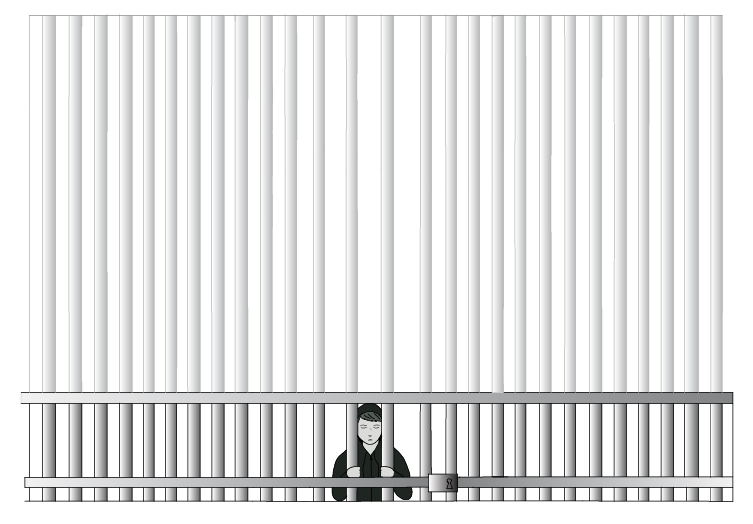Bean bag chairs, posters of favorite bands and a closet full of clothes. A teenager’s haven. But for John Steffen, sophomore, St. Louis County Juvenile Detention was his reality for two and a half weeks. During his detainment, Steffen met other teenagers being punished for their crimes.
“I remember this kid, he was going to be a freshman. [He] didn’t tell me why he was there at first, but when we got closer, he told me he burnt down a school in seventh grade,” Steffen said.
St. Louis County Juvenile Detention is a place for minors that committed crimes to spend their time of detainment. To protect Steffen’s privacy, the reason for his detainment will not be revealed.
“We take from minors [charges] to murders, the whole nine yards,” Ken Locke, St. Louis County Juvenile Detention employee, said. “The longest a person would stay is probably a year and a half.”
Because juvenile detention is a youth detention center for minors involved in criminal activity, the average day in juvenile detention is not what most students would call average.
“More than half the residents have some mental issue of some sort,” Bob James, St. Louis County Juvenile Detention counselor, said. “We’re kind of one step below a full psychiatric hospital, we can do just about anything here. We’re the people who can’t say no.”
St. Louis County Juvenile Detention puts safety of employees and residents at the top of their priority list. The detention center does whatever necessary to ensure residential and staff safety.
“We don’t distribute regular blankets anymore, again for [the residents’] own safety,” Efren Gonzalez, St. Louis County Juvenile Detention employee, said. “It prevents them from tearing it up and being used as a means for self-harm.”
Steffen said even the clothes provided by the detention center were made for the safety of the residents.
“You wore a gray sweater. The shirts don’t go inside out easily because one time, someone hung them self with the sleeves,” Steffen said.
For residents with out-of-control behavior, alternate living conditions are provided to ensure safety.
“The rubber room is what the kids refer to it as…because of the rubber walls,” Gonzalez said.
The ‘rubber room’ is provided solely for the safety of uncontrollable residents.
“Immediately upon being brought in here, our clinical services will be notified,” Gonzalez said. “On occasions a referral will be made to be removed temporarily to be sent to a medical facility for observations… or treatment, if necessary.”
Gonzalez said sometimes residents will behave in rebellious manner during desperate times.
“If you’re going to be in this room for 24 hours what are you going to do? You can bang on the walls and holler, but that’s not going to get you out of here,” Gonzalez said. “Anything to make [the lives of the staff] more miserable [the residents] think makes theirs more meaningful.”
The regular cells are grouped in units of 15. Each cell has its own lock, is approximately eight by ten feet, and only contains necessities.
“You have a cell that has one light and a small window. There’s a metal bed. It’s very solitary,” Steffen said.
For St. Louis County Juvenile Detention, privacy is a privilege lost at its doors. Every unit is equipped with security cameras. Lack of privacy does not just go cell deep.
“There is a huge window, so everyone can see you showering,” Steffen said.
Although St. Louis County Juvenile Detention can be full of hard times and constant struggle, detention can initiate success for some residents.
“The experience here can be motivational in many aspects, but that doesn’t mean it’s for everyone. We do have our success stories,” Gonzalez said. “Our look is, it’s the future that counts, what can you do with it?” Gonzalez said.









